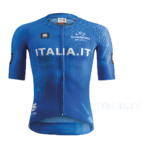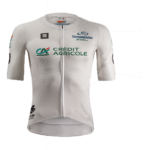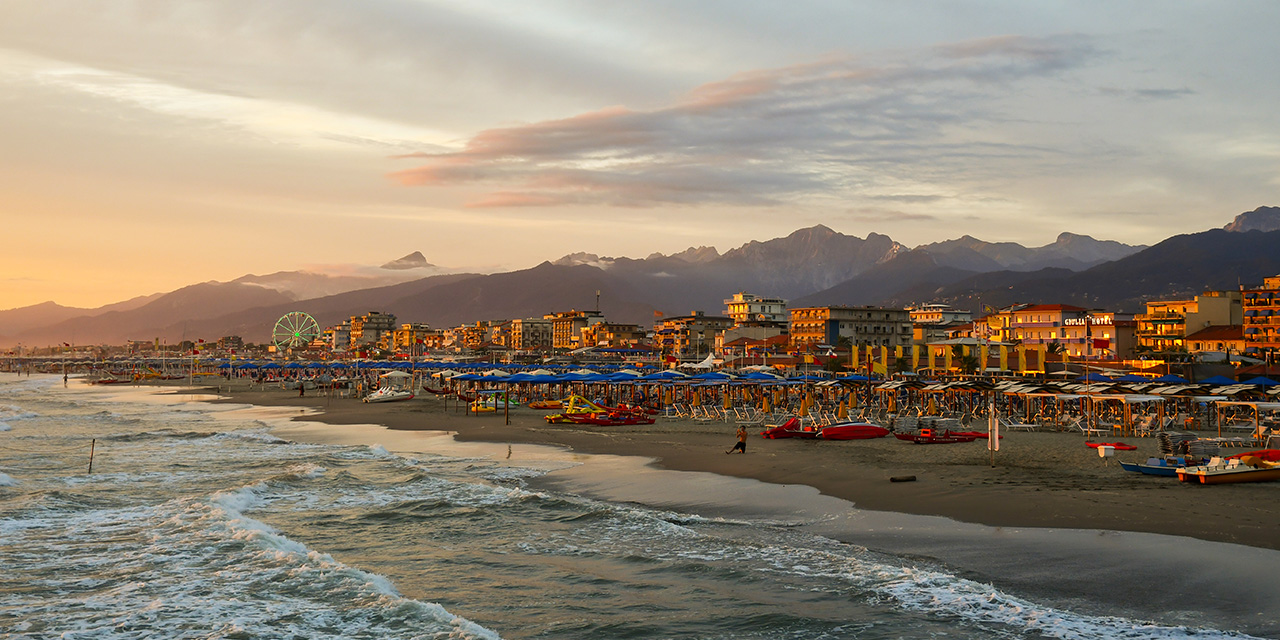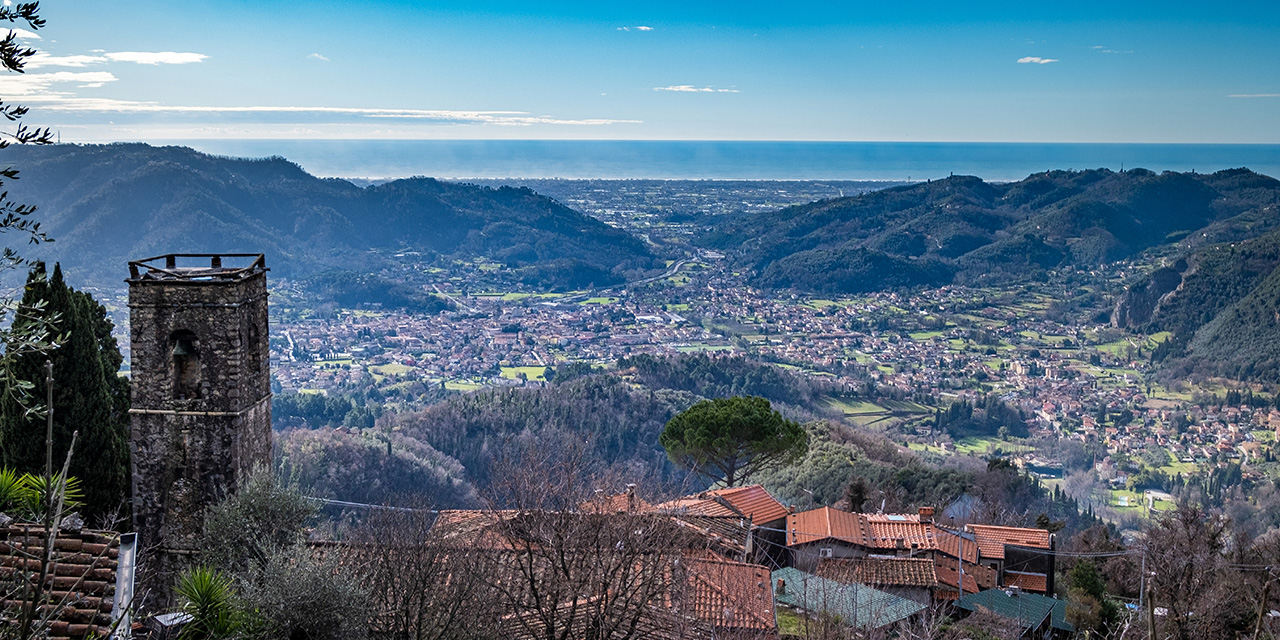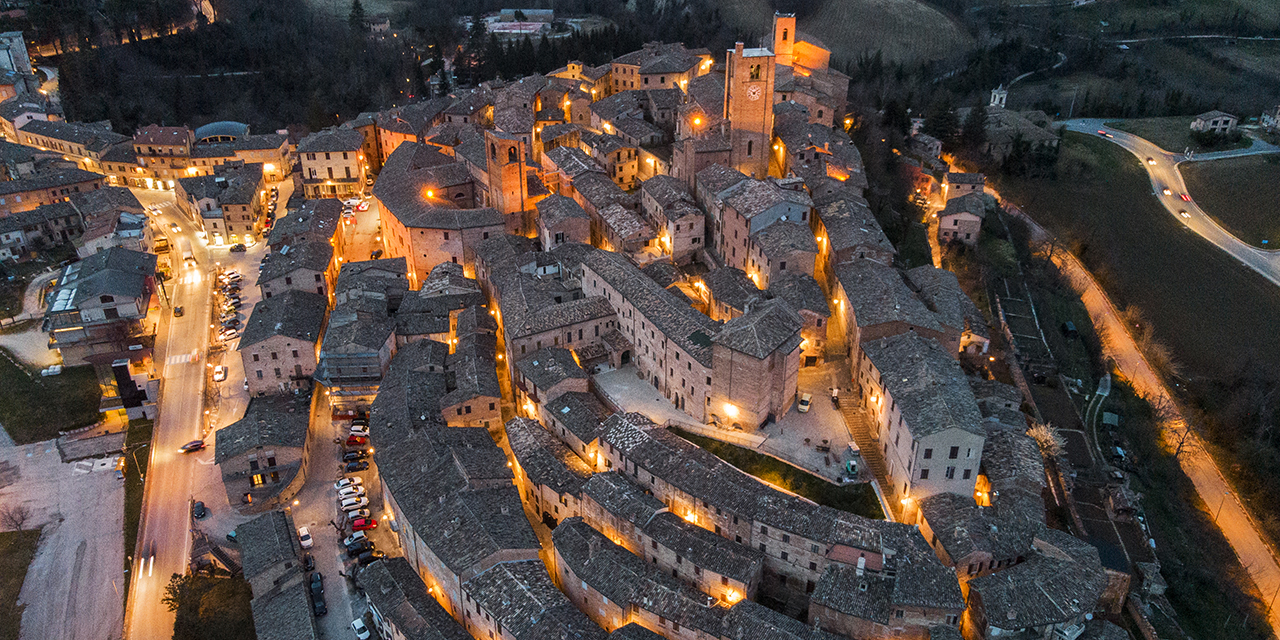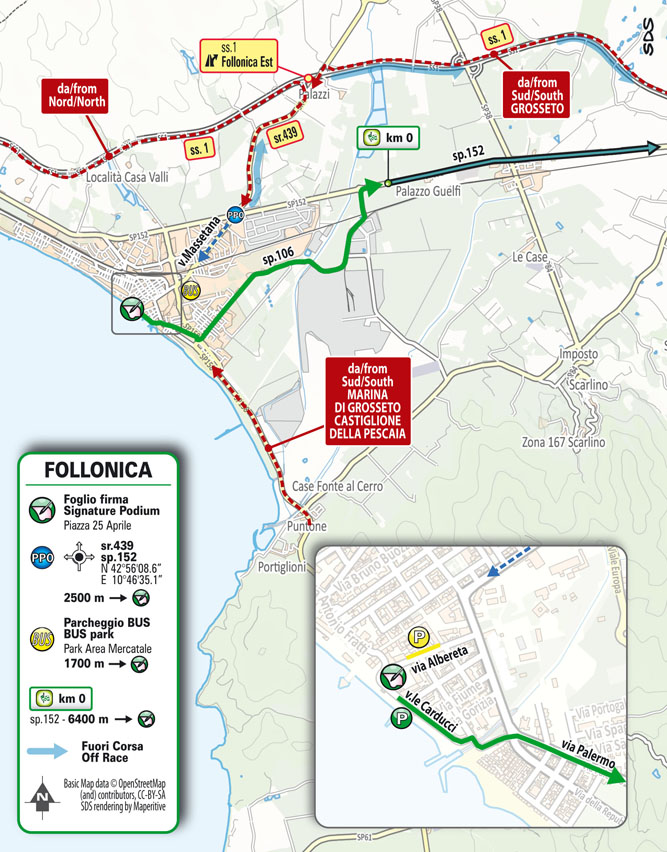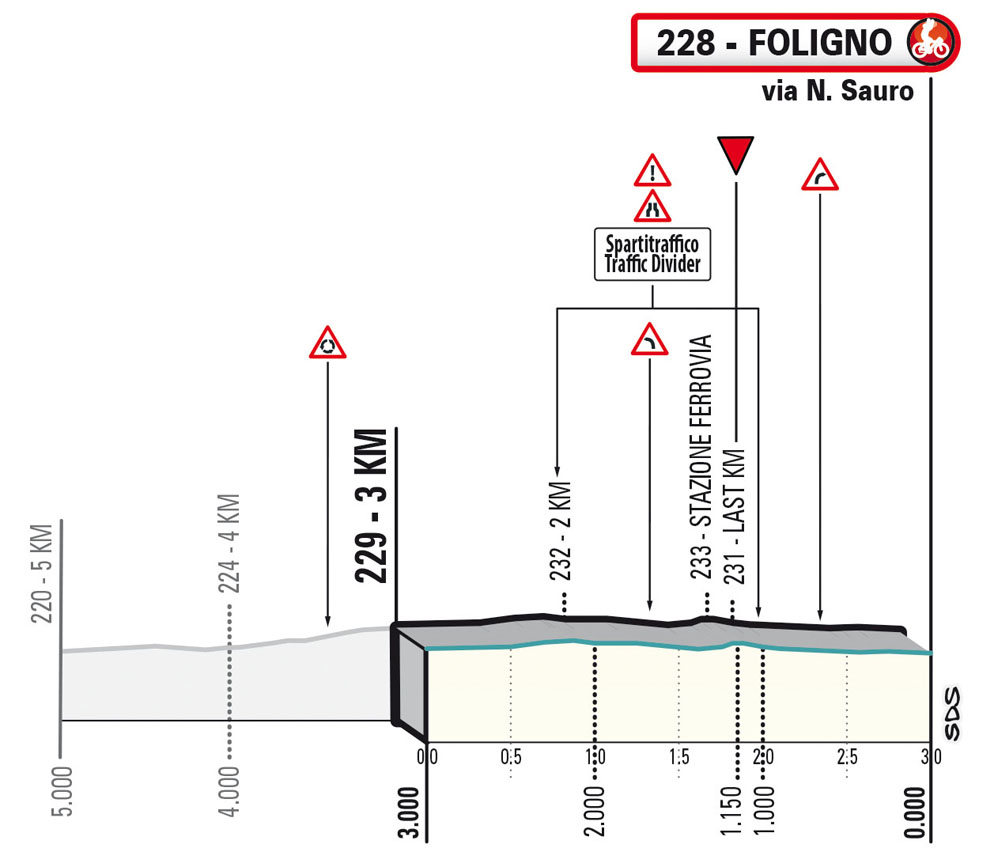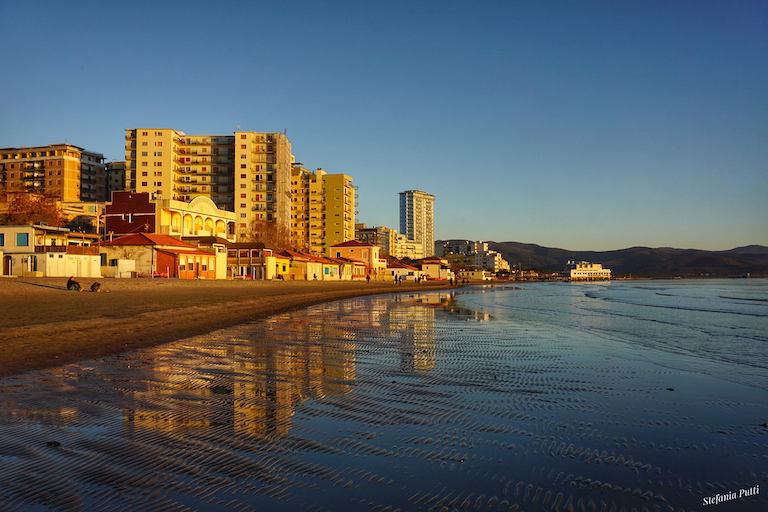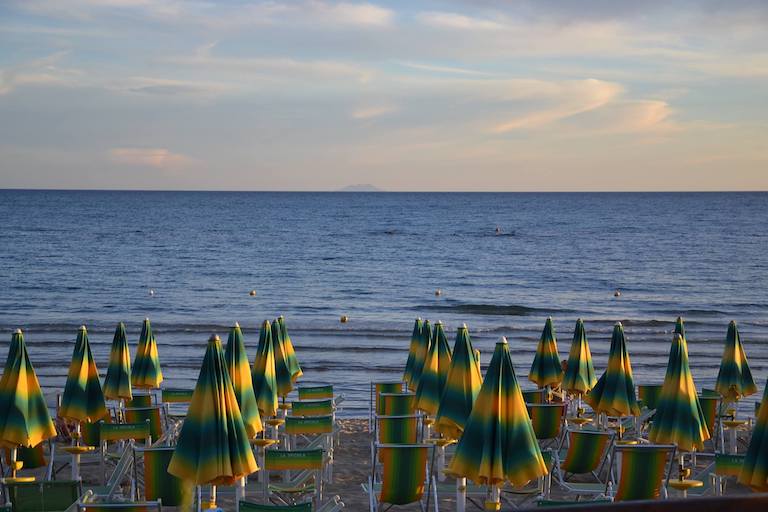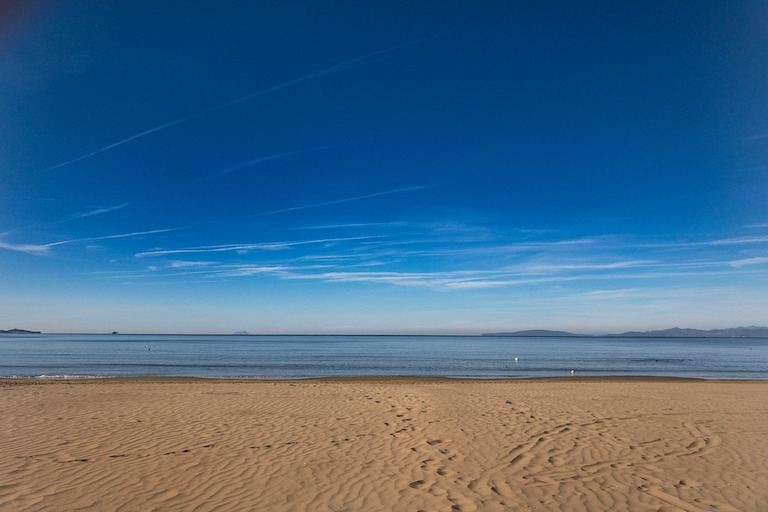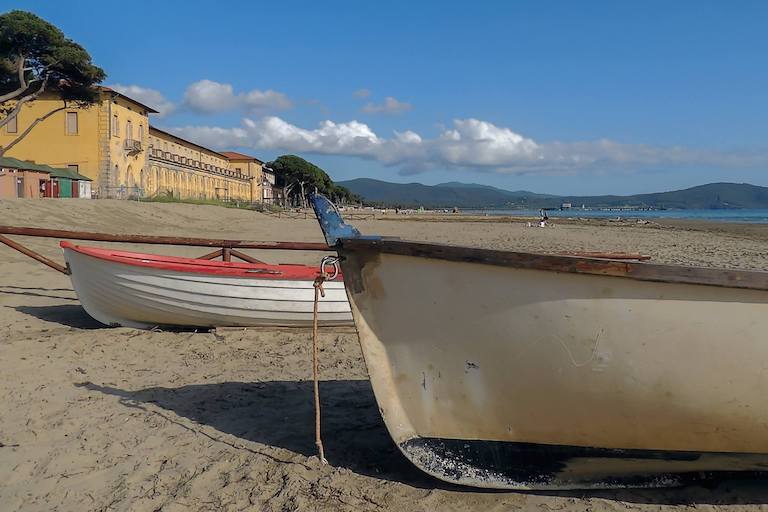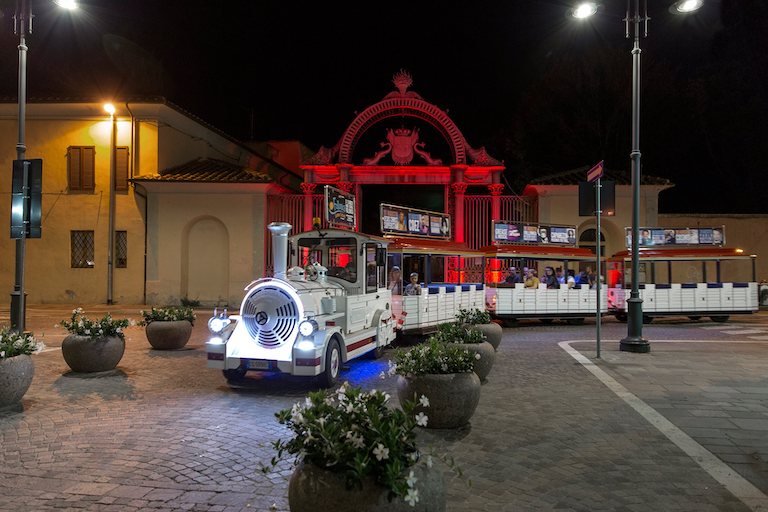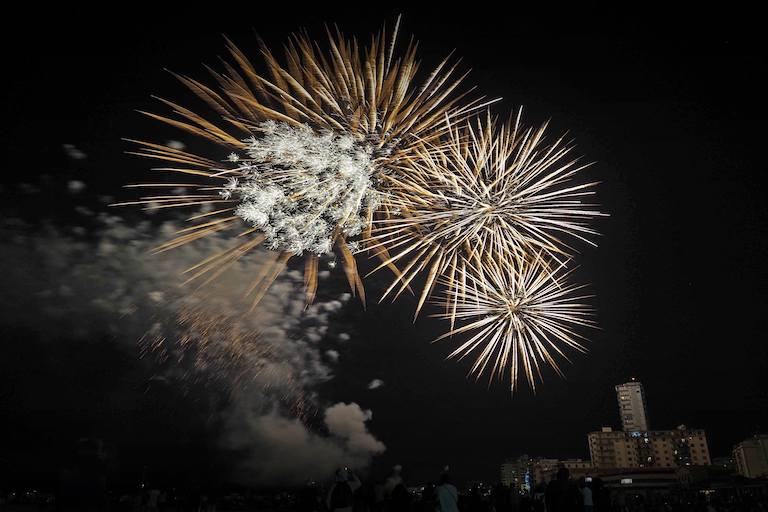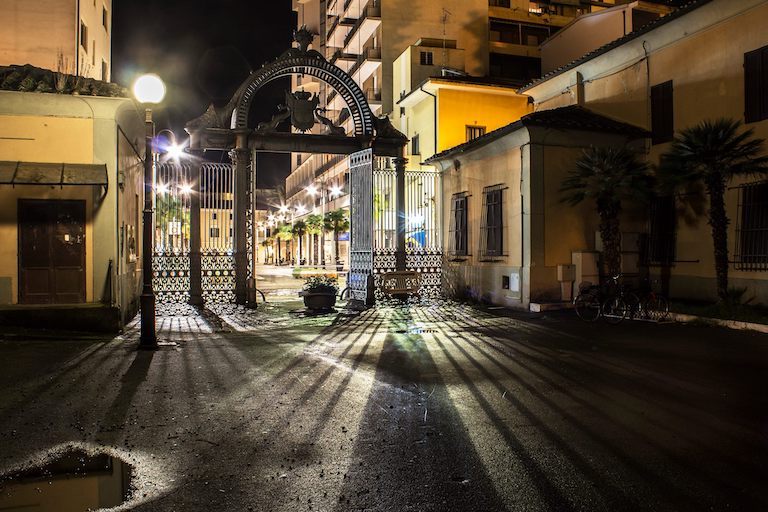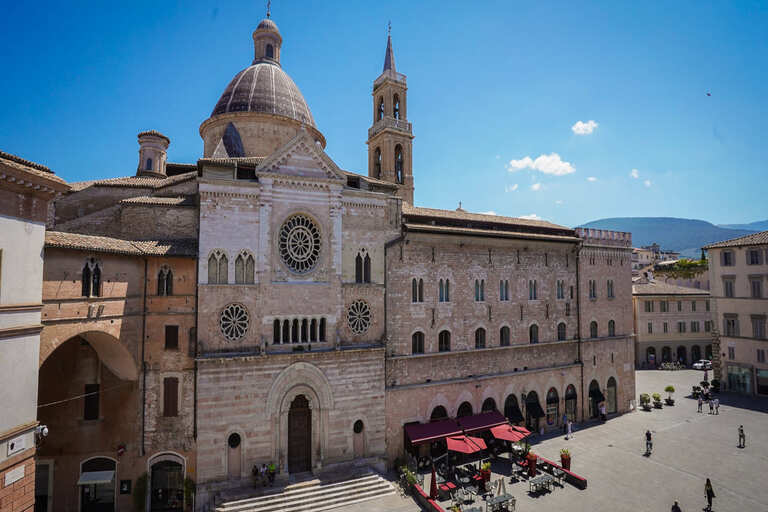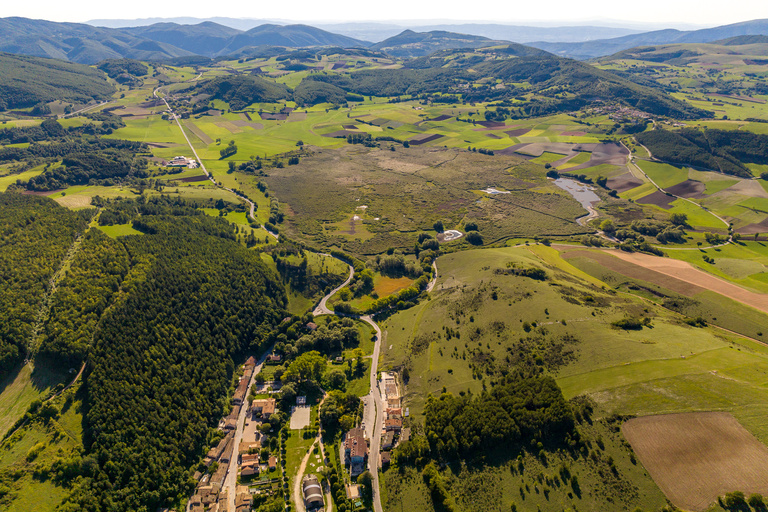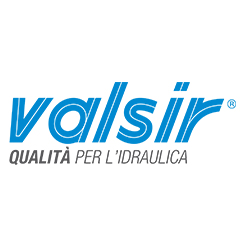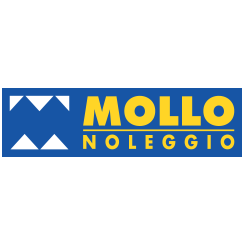profile
map
technical info
The stage is very long, and wavy at first. Starting in Follonica, the route runs across the northern part of the Grosseto province, brushing by the Monte Amiata, and then crosses the Siena area, clearing the Passo del Lume Spento and La Foce, all the way to Montalcino and Chiusi. The gradients then ease out, and the route continues mostly on straight roads, narrowed at points, across the plain surrounding Lake Trasimeno, all the way to Foligno.
Final kilometres
The final kilometres are quite uncomplicated, up to 2,500 m from the finish. The route then takes in a brace of bends (where the road narrows at points) leading into the home stretch. There is just one last, mild bend 500 m before the finish line, which sits on a 160 m long and 7 m wide asphalt straight.
start / finish
final kilometres
itinerary timetable
tourist info
Host city:
Follonica
Overview
Follonica is one of the most popular summer destinations of the Grosseto Maremma and more generally of Tuscany.
The gradual urban expansion toward the sea, which took place mainly during the last century, has made Follonica a city with a strong tourist vocation, although its foundation dates back to the 16th century (AD), when it established itself in the Tuscan territory as an important steel hub.
The historic center of Follonica in fact coincides with the ancient perimeter wall (magonal fence) that enclosed the ironworks.
Points of interest
Follonica’s coastline is particularly prized for its sandy seabed that slopes slowly out to sea. A feature that allows anyone to be able to dive into the water without taking risks.
The numerous bathing establishments scattered along this stretch of the Maremma coastline offer sea lovers the opportunity to spend pleasant days on the beach in the company of friends and family. There is also no shortage of large stretches of free beach and DOG BEACH, dedicated to those who choose Follonica and the Maremma to spend their vacations with their dogs.
Follonica has been awarded the Blue Flag several times in the past 18 years. In 2017 it received the 5 Sails from Legambiente, ricons that have been a guarantee on the quality of the sea water and services provided to visitors since their establishment.
Follonica is a town rich in history, tradition and places to visit. The MAGMA – Museo delle Arti in Ghisa della Maremma (Museum of Cast Iron Arts of the Maremma), located in theformer iron and steel complex, offers the chance to get in touch with the history of Follonica and its territory. The Montioni Natural Park, on the other hand, offers the possibility of historical itineraries to discover some of the most important places for the territory during the Middle Ages.
- MAGMA – Museum of Cast Iron Arts in the Maremma, was inaugurated in 1970 in a temporary location. Since 1998, this museum of the Maremma has been permanently housed inside the old San Ferdinando Furnace. Inside MAGMA, thanks to the multimedia exhibit, it is possible to trace the process of cast iron production, both locally and internationally. In the Etruscan section of the museum, on the other hand, a number of artifacts found during the excavation of the Etruscan iron and steel settlement at Rondelli are on display.
- Follonica Theater: the former steel complex houses, in addition to MAGMA, the Follonica Theater. The restoration project of the Fonderia Leopolda, a building that currently houses the theater, was supervised by architect Vittorio Gregotti. Opened on October 27, 2014, with a concert by Franco Battiato, currently the auditorium can hold 400 people. There is also a cafeteria and a restaurant inside the theater.
- Art Gallery: the Pinacoteca di Follonica, dating back to the early twentieth century, was first Casa del Fascio, then Casa del Popolo and now houses the Civic Art Gallery. Inside are permanent collections donated by contemporary artists and painters, local and otherwise.
Foligno
Overview
Foligno, that is the third among the biggest towns of Umbria, lies on level in the very heart of the Region. That’s why it is traditionally defined “The Centre of the World”. This special position gives it the privilege of being a point of reference for road and railway junctions across the entire Country.
The town, quietly crossed by the river Topino, spreads to a large territory, including little gracious hamlets scattered between the surrounding hills and the overlooking valley.
Religious customs as well as Historical inscriptions, tell us that this land had been inhabiting by populations of UMBRI for years before Romans colonized it during the Flaminia route realization.
The origin of the name Foligno is probably to the worship of a Roman Goddess called Fulginia. It seems to have, therefore, a sacral nature.
The geographically central position and the easy access to the road junctions allowed an economical and industrial development really fast growing, especially for what concern train, commercial and aeronautical fields.
Since the olden days, in fact, Foligno has been traditionally devoted to trade business. It’s not a matter of chance that Saint Francis chose the Market Square (today Repubblica Square) to carry out the famous selling of his horse and cloths to rebuild Saint Damiano’s Church.
This historical gesture, gave birth to his incredible Evangelical path.
Foligno is also well known for its strong relationship with Dante Alighieri, whose death anniversary is seven hundreds right this year. It’s Foligno, in fact, the city where the first issue of a printed copy of his “Divine Comedy” took place. It was 1472.
Visiting Foligno, the tourist, walking through the peculiar alleys that give rise to large squares, can enjoy the beauty of the historical and architectural monuments, the aristocratic palaces and all the treasures that enlighten the city center; not by chance Foligno is also known as “The City of the Mansions”.
Never the less, he will be impressed by the quality of the traditional food and wine, embraced by the warm hospitality of our citizens. He will have the chance of breathing the baroque halo assisting at the Historical Parade of “Giostra della Quintana”, fulfilling his eyes with the beauty and the sumptuous seventeenth-century dresses of Damas and Knights that faces each other in an equestrian competition among the 10 ancient city districts to gain the PALIO.
Last, but not least, we could never forget mentioning the infinite chances that the naturalistic, landscaping, historical attractions that the hills and mountains around have to offer.
Food
The town of Foligno retains most of its culinary traditions and follows a rhythm marked by time, following the seasonal cycles of agricultural production.
It offers tasty opportunities made of simple, qualified and also rare products to lovers of gastronomy.
The agricultural productions of Foligno such as the beans of Cave, the “Gobbi” (thistles), the heart tomato and the particular scent and fragrance of the extra virgin olive oil obtained from the “moraiolo” variety, typical of these areas, mantain always their originality.
Here it’s also produced the wildflower honey by the nectar of several botanical species such as sunflower, chestnut, acacia, etc.
In the Colfiorito highland, agriculture has been able to survive thanks to the specialization of its productions like red potatoes, dairy products, typical cereals such as spelled and original legumes such as lentils and cicerchie.
The characteristic dishes of Foligno are: strangozzi with truffles (typical homemade pasta), tagliatelle (typical homemade pasta) and gnocchi with mutton, Foligno-style roasted pigeon, Menotre trout in porchetta (grilled, spit-roasted), typical salted cheese cake with salami, lentils and red Colfiorito potatoes.
A delight for the palate and a local specialty is the Rocciata, a typical dessert from Foligno, consisting in a thin sheet of wheat flour-based dough that wraps a mixture of walnuts, sugar, olive oil and apples, to which you can add other ingredients such as alchermes liquor, cocoa, sultanas, dried figs, cinnamon and pine nuts according to the tastes or imagination of the pastry chefes.
Wine
Foligno is the center of important wine production areas such as sagrantino di montefalco red wine (available dry or as PASSITO), red wine of montefalco, grechetto (white wine) and trebbiano (white wine).
Points of interest
A prestigious marble statue of the most famous painter of our town, Niccolò di Liberatore, also known as L’alunno (1430-1502) welcomes the visitors coming from the railway or the southern access to city from the widening of PORTA ROMANA, (one of the four ancient points of access to Foligno) in the middle of which it’s been standing for decades, overlooking the city.
Walking through the main street, Corso Cavour, beating heart of the shopping and social activities of the city, we encounter “PIAZZA GRANDE”, or “DELLA REPUBBLICA”, the main square of Foligno, where overlook most of the important buildings and monuments: Saint Feliciano’s Cathedral (Church dedicated to our Patron Saint); Palazzo Trinci that hosts the Municipal Museum and a remarkable cicle of frescos probably signed by Gentile da Fabriano and his coworkers. The Podestà Residence, Orfini Palace, location of the printing house that gave birth, thanks to the German typographer Numeister, to the first printed issue of the Divine Comedy By Dante Alighieri in 1472. Today the building hosts an interesting printing museum. All these architectural masterpieces, with the impressive Municipal Palace with its iconic tower, become an emblem of the horrifying 1997 earthquake, encircling and defending this precious space, core of the spirit of the city.
Keeping on exploring the main arteries of the city center a keen eye can’t miss the ORATORIO DEL CROCIFISSO and CANDIOTTI RESIDENCE, the Ente Giostra della Quintana headquarter wich is now the Quintana immersive museum, just nearby the Saint Domenico’s Auditorium, Saint Domenico’s piazza and, of course, SANTA MARIA INFRAPORTAS church, the most ancient church of the city.
The ORATORIO DELLA NUNZIATELLA is another piece of jewel that can’t be missed. It hosts an impressive fresco by Pietro Vannucci aka IL PERUGINO.
The tourists, lovers of contemporary art can find in Foligno their satisfaction in admiring the CALAMITA COSMICA by Gino De Dominicis. This Huge Sculpture lied inside the ex Church of SS.TRINITA in Annunziata measures 24meters X 19 Meters and it’s almost 4 of hight.
Moreover the CIAC, Museum of contemporary art of the city, is used to promote very interesting exibitions in addiction to an absolutely remarkable permanent collection.
The surrounding area, just outside the town, is enriched by precious hamlets and medieval villages spreaded all along the hills and the Appennine dorsal.
The protected natural area of the Colfiorito Park, characterized by the presence of the Swamp, is famous for being a resting area of several species of migrator birds as well as a permanent environment of resident ones.
Colfiorito hosts not only a permanent exibition of ornithology species , but also a very interesting Archeological Museum (MAC) dedicated to some of the Pre Roman populations that used to live in the area , like the UMBRI and the PLESTINA civilisation.
Moving along the hills, we have to mention the unmissable FASCIA OLIVATA that is articulated between Assisi and Spoleto, with such breathtaking landscapes to be recognised by the FAO “Rural World Patrimony”. Walking through its paths we meet the peculiar hemlet of PALE, still encloused in its ancient castle. In the middle of the main square,on the right, we notice the Parish of Saint Biagio, Patron of wood and paper handcraft artisans.
Venturing inner inside the village we’ll find the ABBADESSA caves discovered in the 18th century.
The cliff on which Pale is stuck decrease towards the Altolina Valley with a natural leap of the river Menotre and its impressive waterfalls.
Hiking the side of the hill we’ll reach the SANTA MARIA GIACOBBE hermitage, with its frescos from XIV and XV centuries.
Another magical village in the neighbours is Rasiglia. The water source that flows among the medieval houses makes it one of the most desirable destination for many (people).
Last but not least, we strongly advice to not missing the impressive SASSOVIVO ABBEY that, secluded inside a deep holly oak wood , that represents one of the most ancient proofs of the Benedictine Monks in our Valley.







